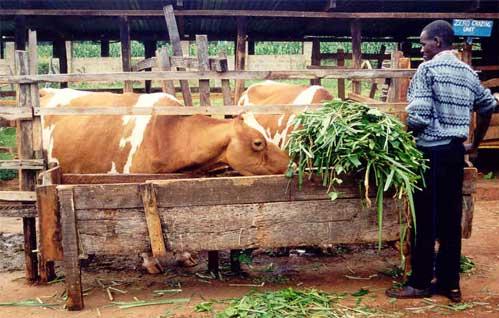While sourcing for dairy cows, most farmers demand for high-producing animals, believing that they will make more money from them.
However, the question they don’t ask themselves is that at what cost are the animals producing the milk? In most scenarios, they end up with a low-yielding dairy cow, contrary to what they expected.
A few months ago, I had the chance to attend a very interesting training by Dutch dairy experts on one of the leading farms in Eldoret.
For the first time, we focused only on socio-economic aspects of dairy farming and not the usual technical topics in herd management, fertility, feeds and fodder and healthcare.
The farm that hosted the event allowed us to use their financial records for training purposes, giving us the opportunity to practically learn using real-time financial data of a dairy farm.
On our platform, we receive over 20 orders daily for dairy cows.
Our analysis of the data we received this year revealed that 80 per cent of the orders placed were for high-producing cows, with a daily average of 25 litres and above.
Some 15 per cent of the orders asked for cows producing 40-50 litres of milk and above.
I have met several farmers willing to pay any price for cows with high production with a simple argument: if a cow produces 40 litres, and one litre of milk sells for Sh40, one will earn Sh1,600 daily, which translates to Sh48,000 monthly just from one cow.
This argument is false on many accounts but it still is being hyped by several farming blogs, farmers and even agricultural experts, which begs the question, does having a high producing cow guarantee more profits?
Our host farm in Eldoret is arguably one of the best managed dairy entities in the country. They milk over 50 pedigree cows, processes their own produce and maintains very low operating costs.
One striking practice was that the farm was very comfortable with maintaining a herd average production of 18 litres.
These are cows that could easily produce 30 litres. Why would they produce so low?
The farm was at the time feeding cows on maize silage and some concentrate with minimal grazing. A typical expert would advise the farmer to buy protein feeds from the market to enrich ration and improve production from 18 litres, to say 23 litres.
However, after calculating the extra quantity of the protein feeds needed per cow, the farm could have spent more money to produce an extra five litres but earn less.
Reuben Chirchir: I rear 8,600 chickens in cages; targeting 21,000 chickens in next 12 months
If using maize silage as the main forage, to produce a kilo costs about Sh4-Sh5 (from land preparation to conservation). Silage has average of 30 per cent dry matter meaning a cow, weighing about 500kg would consume 40-50kg a day, which costs at most Sh250.
Now, assuming this cow produces 18 litres on silage, with all costs factored in, she gives you a litre at Sh14, this means your total cost of production is Sh252.
At Sh40 per litre, she rakes in a profit of Sh468 a day. Now, to raise the milk to 24 litres, you will spend additional money on hay or dairy meal.
For hay, a bale weighing 10kg in most shops despite producers claiming it is 15-20kg costs Sh250, and the cow needs two.
This means you have raised the cost of producing the additional litres to about Sh26 each or even more (depending on hay market price), bringing the total cost of production at Sh624, putting your profit at Sh336.
Take into account that the price of milk is ever fluctuating, with a drop always more possible.
I know several farms with very high production but at the same time very high costs. Why would a farmer own a cow that produces 40 litres, and spend 30 litres to pay for the costs? Isn’t it wiser managing a cow to produce 15 litres and only spend three litres to pay for the cost?
As the dairy sector is becoming more competitive and profitable, it’s important that farmers start focusing on their cost price and not just volumes.
Feeds, in this case, are the raw materials while the role of a cow in this business is equivalent to a machine that does the work. A smart farmer must, therefore, always ask himself the question, “What is the cheapest method to produce milk?”
Buying a good cow is essential and sets the foundation of a sustainable dairy business, proper housing will help your cow have the comfort to do the work of digesting food and producing milk and skills to manage the cow is as important in business.
However, your margins will entirely depend on managing your feeds to ensure you consistently have good quality feed all-year-round. Feeding cost will account for the biggest percentage of your costs.
This feature was written by Cow Soko’s Victor Sylvester.








